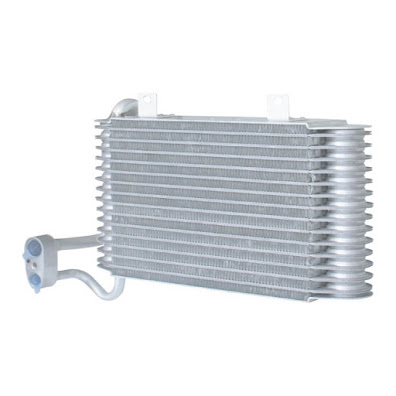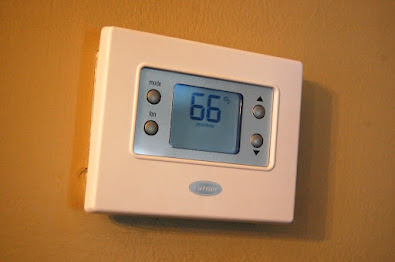Evaporator Coil Replacement: What You Need to Know
If you have an air conditioning system that uses evaporator coils, it is important to know what you need to do in order to replace them. Evaporator coils are used to extract moisture from the air and make it cooler. They are usually made out of aluminum. If they become dirty, they will be less efficient, and it may cause your air conditioning system to shut off.
Evaporator Coil Replacement: What You Need to Know
If this occurs, you should take steps to repair it. The first step that you should take is to check the system to see if it is still running. You can tell whether your system is operating by using a light switch. If the system is not operating, you should call an HVAC technician to install the evaporator coil.
There are three main components to any evaporator coil: the copper wire coil, the aluminum fins attached to the top, and the air vent pipe that goes over the top of the coil. Unfortunately, these parts wear down over time, causing the coil's efficiency to decrease. Fortunately, replacing coils is not difficult at all, and most people have no idea what they should look for when purchasing replacements.
Here we will go over how to tell if a coil needs replacement and provide tips for finding the correct ones for your setup.
Coil Size
First things first, knowing what size coil you need is crucial to determining whether or not you need to replace yours. When looking at your current coil, make sure to check out its height. The ideal height is 2-3 inches, depending on your setup. You probably don't need a replacement if it is much higher than that. However, if it is significantly lower than that, you may want to consider replacing it.
Aluminum Fin Size
The second thing that you'll want to keep an eye on is the fin size. Aluminum fin sizes vary greatly, and the best way to determine what size you need is to measure the surface area of your coil. To calculate this number, take the length of your coil (in inches), add twice the width (again, in inches), and multiply by four. That gives you the full square footage of the entire coil.
Now, divide that whole number by 4.8 to get the final result, which will represent the number of square feet per inch. So if the finished product was 20 1/2', you would use 20' divided by 4.8 4.33, meaning each inch represents 43.33 square feet of the coil's surface area. Once you know how many square feet each inch represents, you can easily find the right-sized fins for your coil.
Air Vent Pipe Size
Lastly, pay attention to the size of the air vent pipes. These are critical in controlling airflow and temperature throughout your growing space. As you've already figured out, based on our discussion above, the ideal air vent size is around two inches long. Anything larger than that means you're going to have trouble regulating the temperature inside the room, while anything smaller than that won't allow enough ventilation flow. In either case, the chances of you needing to replace your vents are pretty low.
Finding the Right Coils
Now that you know where to look and how to figure out your coil's sizing, it's time to start shopping! There are plenty of options, including local and online suppliers. Depending on their location, you can expect to pay anywhere from $20-$50 for a single coil. Keep in mind that these prices don't stay fixed, especially if you live near a major city, where demand tends to drive pricing upward.
Evaporator Coil Size
If you decide to buy locally, keep in mind that shipping charges will likely eat away at the savings you were hoping for. Online vendors tend to offer even cheaper prices, often less than half the price of retail shops.
So here's the deal: if you're looking for a good value, you will need to shop around. Unfortunately, most retailers only sell one type of coil: aluminum. While those types work fine in the short term, they can become a real problem once you reach the end of your lifespan. Copper coils, meanwhile, are expensive and hard to maintain. They also require electricity to run, making them harder to install and operate. Since there's nowhere else to turn, it makes sense to spend some money now to save a lot later. Good luck with your search!
How much does evaporator coil replacement cost
An evaporator coil replacement is one of the most common repairs in a home. Replacing an evaporator coil is usually quick and easy for a home handyperson, but it can be expensive. Here are the costs of evaporator coil replacement according to various sources:
The cost of an evaporator coil replacement will vary depending on the make and model of your appliance. In general, though, the average cost is around $200. However, this price can range widely based on the make and model of your appliance. For example, some models of appliances have more expensive coils than others.
Is it worth replacing evaporator coil?
Many people think replacing their evaporator coil every 8-10 years is worth replacing. This is because the coil is a major part of your air conditioner, and if it fails, it will not work properly. However, there are a few things to consider before making this decision.
First, you need to determine what kind of air conditioner you have. Some models have coils that are easy to access and replace, while others may be more difficult to access and require specialized tools.
Second, you need to determine how old the coil is. Coils typically last around 8-10 years before they start to fail. However, depending on your home's conditions and the air conditioner's age, your coil may last as long as 15 or 20 years.
In conclusion, if your evaporator coil is starting to lose heat, it may be time to replace it. However, there are a few things you'll need to know to do this successfully, so be sure to check out our Evaporator Coil Replacement guide for more tips and advice.





Comments
Post a Comment